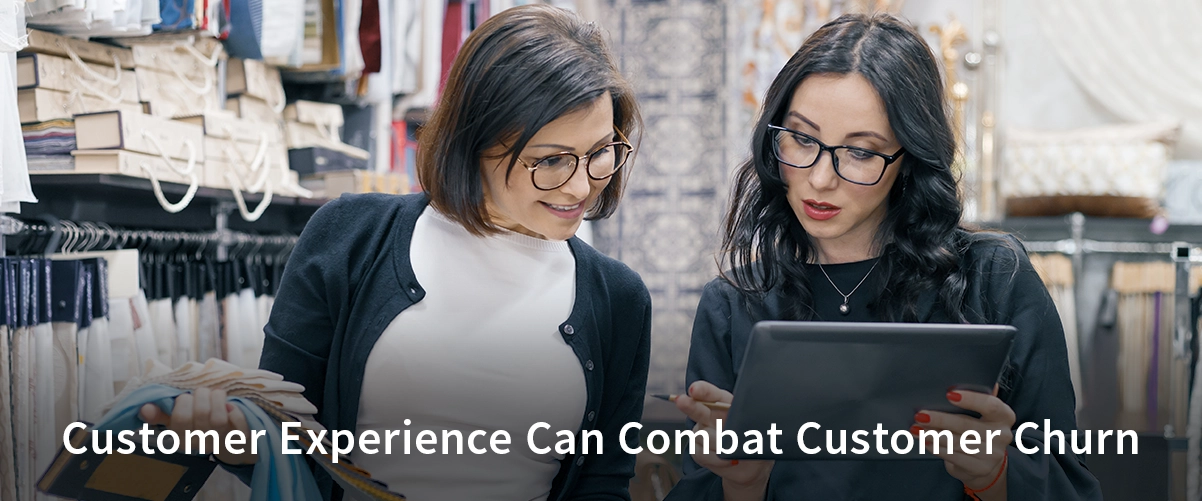
Customer Experience (CX) is the sum total of all interactions a customer has with your brand. It’s the emotional journey a customer takes from initial awareness to post-purchase satisfaction. A positive CX can lead to increased customer loyalty, repeat business, and positive word-of-mouth. Conversely, a negative CX can result in customer churn, negative reviews, and lost revenue.
The Impact of CX on Customer Churn
Customer churn, the rate at which customers stop doing business with you, can be influenced by various factors, including:
- Poor customer service: Inefficient or unresponsive customer support can frustrate customers.
- Difficult purchasing process: A complex or time-consuming checkout process can deter customers.
- Lack of personalised experience: Generic interactions can make customers feel undervalued.
- Technical issues: Website glitches or app crashes can negatively impact the customer journey.
Strategies to Enhance Customer Experience
Streamline Customer Touchpoints:
- Consistency: Ensure a consistent brand experience across all channels (website, physical store, social media).
- Accessibility: Make your products and services easily accessible through user-friendly platforms.
- Personalisation: Tailor your interactions to individual customer preferences.
Reduce Response Times:
- Prompt Support: Implement efficient customer support channels (live chat, email, phone) with quick response times.
- Self-Service Options: Provide helpful resources like FAQs and knowledge bases to empower customers.
Optimise Billing Processes:
- Simplicity: Keep billing and invoicing straightforward and easy to understand.
- Flexibility: Offer multiple payment options to cater to diverse customer preferences.
- Transparency: Clearly communicate pricing, fees, and payment terms.
Incentivise Loyalty:
- Reward Programs: Implement loyalty programs with attractive rewards to encourage repeat business.
- Personalised Offers: Send targeted promotions and discounts based on customer behavior.
- Exclusive Access: Offer exclusive benefits to loyal customers, like early access to new products or special events.
Collect and Act on Feedback:
- Customer Surveys: Conduct regular surveys to gather feedback on product quality, service, and overall experience.
- Social Listening: Monitor social media for customer sentiment and address issues promptly.
- Analyse Customer Data: Use data analytics to identify trends and areas for improvement.
As the retail landscape continues to evolve, customer experience will remain a critical differentiator. By investing in innovative technologies, personalised interactions, and seamless journeys, businesses can stay ahead of the curve. Let’s embrace the future of retail, where customer satisfaction is the ultimate goal.
How ETP Unify’s CRM Can Help You Retain Customers and Increase Revenue
ETP Unify’s CRM module is a powerful tool to combat customer churn by fostering strong customer relationships and driving loyalty. By centralising customer data and enabling personalised interactions, retailers can significantly reduce customer attrition.
Key Strategies to Combat Churn:
- Personalised Customer Experiences: ETP Unify’s CRM allows retailers to segment customers based on demographics, purchase history, and preferences. This enables personalised marketing campaigns, product recommendations, and loyalty programs.
- Tailored offers and promotions can be delivered through various channels, including email, SMS, and in-app notifications.
- Proactive Customer Support: The CRM module can help track customer interactions and identify potential issues.
- By promptly addressing customer concerns and resolving problems, retailers can prevent dissatisfaction and maintain customer loyalty.
- AI-powered chatbots can provide instant support and answer common queries.
- Effective Loyalty Programs: ETP Unify’s loyalty management features allow retailers to create and manage loyalty programs that reward customer loyalty.
- By offering exclusive discounts, rewards, and personalised offers, retailers can incentivise repeat purchases and reduce churn.
- Data-Driven Insights: The CRM module provides valuable insights into customer behavior, preferences, and churn patterns.
- By analysing customer data, retailers can identify at-risk customers and take proactive steps to retain them.
- Predictive analytics can help anticipate customer needs and offer timely solutions.
By implementing these strategies, retailers can strengthen customer relationships, increase customer satisfaction, and ultimately reduce customer churn. ETP Unify’s CRM module empowers businesses to deliver exceptional customer experiences and drive long-term growth.






